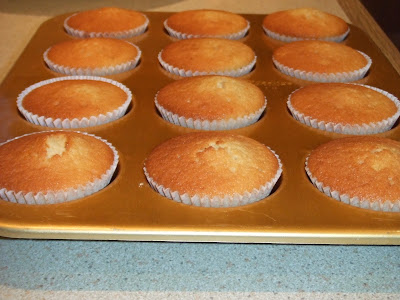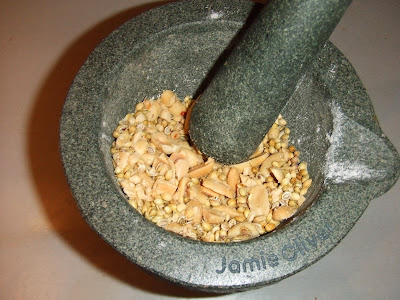Hello you lovely people! I hope you that you had a wonderful
break, however you choose to mark the season (if at all). I marked it by
getting a year older, eating a delicious salt-caramel chocolate torte from
Babkalicious and attending Limmud conference and learning a lot of new
things.
I am one of those weird people who gets oddly excited about
kitchen utensils, the bigger the better. My favourite Selfridges window is the
one with the display of giant saucepans, and I have confused many people by
stopping in my tracks to gaze longingly at it. The flat I am currently living
in contains one of the largest frying pans I have ever had the privilege to be
able to use, and as soon as I saw it my mind just started fizzing with new
recipes to try. It is the perfect size and shape to toast a ton of
pumpkin seeds, and so this recipe just had to be made (I get inspired by normal
things too, like sunsets and art, I’m not a complete lunatic).
This dip is absolutely delicious, it is simple and just works in that way that ancient and authentic recipes do: toasty, wholesome, citrus-fresh
and ever-so-slightly bitter. Toasting pumpkin seeds transforms them in
the most wonderful way. They become crunchy and fragrant, with a complex
roasted nutty flavour.
The quantities given here make enough for a smallish
bowlful, or rather, enough as part of a Mexican/South American mezze-style dip selection for about 6
people. The original recipe uses a food processor, but I decided to use my
mortar and pestle, and then an immersion blender. This probably kept the
texture a bit rougher, which I liked, and was less complicated for washing-up
purposes. But really, I just love using my mortar and pestle – it is rough
stone and heavy, and makes me feel a bit more authentic.
Ingredients:
1 cup plus 1 tbsp pumpkin seeds
2 tbsp olive oil
½ onion, finely diced (or use a whole one if it is small)
1 jalapeño, seeds and white pith removed, and finely diced
2 cloves of garlic, crushed
Small handful fresh parsley (equivalent to about 1/3 cup)
Small handful fresh coriander leaves
2 tbsp fresh lime juice
zest of half an orange
salt
Serve: with tortilla chips, crudités, warmed soft tortillas
and other South American delicious dippy things like salsa, guacamole, and sour
cream.
Method:
Heat a large frying pan and toast the pumpkin seeds in a
single layer (no oil), tossing occasionally, until they crackle and pop. Some will
jump out of the pan in an over-excited kind of way. You may need to do this in
stages if your pan isn’t big enough.
Saving a few of the seeds for garnish, grind the rest to
powder in a pestle and mortar and add to a large bowl. You will definitely need
to grind them in stages.
Heat 1 tbsp of the olive oil in the frying pan, add the
diced onion and jalapeño, and fry over a medium heat, stirring occasionally.
Once it starts getting a little softened and translucent, add the garlic and
fry for a few minutes more, and then add to the bowl with the pumpkin seed
powder.
Add the parsley, coriander, lime juice, orange zest, 1 tbsp
olive oil, pinch of salt, and 1/3 cup of water to the bowl with the ground
pumpkin seeds and fried things, and use an immersion blender to puree
everything together to a rough, humous-like texture. Taste and add a little more
salt if needed.
Serve at room temperature, scattered with the reserved
toasted pumpkin seeds and a little drizzle of olive oil.























